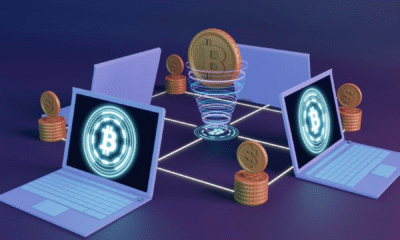BUSINESS
Shipment Exception: What It Means and How to Handle It

In the world of e-commerce and global logistics, shipping plays a critical role in ensuring customer satisfaction and timely deliveries. But what happens when a package doesn’t arrive as planned? One term that often causes confusion and concern is “shipment exception.” Whether you’re a customer waiting on an online order or a business managing supply chains, understanding what a shipment exception means and how to respond can save time, money, and frustration.
This comprehensive guide will walk you through everything you need to know about shipment exceptions—what they are, common causes, how carriers handle them, and how you can resolve or even prevent them.
What Is a Shipment Exception?
A shipment exception refers to a situation where a package is temporarily delayed or deviates from its expected delivery path. This does not necessarily mean the package is lost, but it does indicate that something unexpected has occurred during transit, causing a disruption in the delivery process.
Most major carriers such as FedEx, UPS, DHL, and USPS use the term “exception” to flag shipments that require attention or involve issues that could delay delivery. When you see a “shipment exception” status in tracking, it typically means the delivery is not proceeding as originally scheduled.
Common Reasons for Shipment Exceptions
There are several reasons why a shipment may be flagged with an exception. These can be grouped into the following broad categories:
1. Weather-Related Delays
Severe weather conditions like hurricanes, snowstorms, floods, or even heavy rain can disrupt transportation routes, grounding planes or blocking roads. Carriers may delay shipping for the safety of personnel and goods.
2. Customs Delays
Delays can occur due to:
Incomplete or incorrect documentation
Duties or taxes not paid
Prohibited or restricted items
3. Incorrect Address
One of the most common causes of a shipment exception is a wrong or incomplete delivery address. This includes:
Missing apartment or suite numbers
Incorrect ZIP codes
Misspelled street names
4. Recipient Unavailable
If the courier attempts delivery and the recipient isn’t available (especially for packages that require a signature), the package may be marked with an exception.
5. Damaged or Lost Package
Sometimes, a package may be damaged during transit or misplaced at a sorting facility. In such cases, the carrier may flag the shipment and halt delivery until further assessment.
6. Label or Barcode Issues
If the label is smudged, torn, or unreadable, the carrier’s system may not be able to track or route the package correctly, resulting in an exception.
7. Security and Inspection Delays
Certain items may require additional screening or inspections, especially when shipping internationally. These delays are often unpredictable but can cause exceptions.
How Carriers Display Shipment Exceptions
Each carrier has its own way of displaying and describing shipment exceptions in tracking information. Here are a few examples:
FedEx: Might show “Delivery exception – Customer not available or business closed.”
UPS: Might indicate “Exception – Action required,” along with a specific reason.
USPS: May show “Held at Post Office at Customer Request” or “Delivery Attempted – No Access to Delivery Location.”
DHL: Might display “Clearance event” for customs-related exceptions.
Understanding the language used by your carrier is crucial to interpreting the status and knowing what actions (if any) are needed.
What to Do If You See a Shipment Exception
Here are the steps you should take when a shipment exception occurs:
1. Check the Tracking Details Carefully
Start by reviewing the tracking history and exception message. Often, the carrier provides a brief explanation or timestamp, helping you understand the issue.
2. Wait 24–48 Hours
In many cases, exceptions resolve themselves quickly, especially if they are weather-related or due to a minor delay at a sorting hub.
3. Contact the Carrier
If no update occurs after a day or two, call or use the online support of the shipping company. Have your tracking number ready, and ask for more detailed information or next steps.
4. Communicate With the Sender or Recipient
If you’re the sender, notify your customer about the delay. IKeeping everyone informed maintains trust and can expedite resolution.
5. Update or Correct Address (If Applicable)
If the issue is due to an incorrect address, carriers often allow a limited time window to make corrections. Log in to your account or call customer support as soon as possible.
6. Schedule a Redelivery or Pickup
If the recipient was unavailable during the delivery attempt, you can often schedule a redelivery or arrange to pick up the package from a local facility.
Can You Prevent Shipment Exceptions?
While not all exceptions are preventable, especially those due to weather or customs, many issues can be minimized with proactive steps:
✅ For Senders:
Double-check addresses, especially ZIP/postal codes and suite numbers
Provide full documentation for international shipments
Use durable packaging and secure labels
Include contact details for the recipient
Choose carriers with strong tracking systems and customer service
✅ For Recipients:
Track your shipments regularly
Ensure someone is available to receive signature-required deliveries
Sign up for delivery notifications or app alerts
Provide delivery instructions when possible (e.g., leave at front door)
Impact of Shipment Exceptions on Businesses
For e-commerce businesses, frequent shipment exceptions can lead to:
Customer dissatisfaction
Negative reviews
Higher customer service costs
Increased return rates
Therefore, it’s crucial for businesses to:
Work closely with reliable shipping partners
Offer transparent tracking and communication
Some companies even use logistics software or third-party fulfillment centers to track exceptions in real time and automate responses.
Shipment Exception vs Delivery Exception
While often used interchangeably, there’s a subtle difference:
Shipment Exception refers to any issue that disrupts the shipping process, including before the item is out for delivery.
Delivery Exception specifically means there’s an issue while attempting to deliver the package (e.g., recipient not home, no access, etc.).
Understanding this distinction can help in troubleshooting and interpreting tracking updates more accurately.
conclusion
A shipment exception may feel like a red flag, but in most cases, it’s just a temporary hiccup in the logistics chain. The key is not to panic. Most exceptions are resolved within a short time frame, especially if the correct follow-up actions are taken.
Whether you’re a buyer awaiting an important package or a seller ensuring timely deliveries, knowing how to interpret, respond to, and prevent shipment exceptions is a vital part of navigating the modern shipping landscape.
FAQs About Shipment Exceptions
Q: Is a shipment exception the same as a lost package?
A: No. An exception means the shipment is delayed or needs attention. A lost package would no longer be trackable or located.
Q: How long can a shipment exception delay a package?
A: It depends on the cause. Weather or customs delays can last days, while address issues may be resolved within 24–48 hours.
Q: Will the carrier attempt delivery again after an exception?
A: Yes. In most cases (like recipient unavailable), the carrier will try again or leave instructions for pickup.
Q: Can I get a refund due to a shipment exception?
A: Some carriers and retailers offer refunds or shipping guarantees if the delay was preventable and affects service quality.
BUSINESS
FintechZoom.com Asian Markets Today: Trends, Insights, and Analysis

With rapid technological advancements, regulatory changes, and economic shifts, investors and traders closely monitor platforms like FintechZoom.com for real-time updates on Asian markets. This article provides an in-depth analysis of FintechZoom.com Asian Markets Today, covering key trends, stock performances, economic indicators, and FAQs to help you stay informed.
FintechZoom.com is a leading financial news and analysis platform that provides up-to-date market data, stock insights, cryptocurrency trends, and economic reports. Its coverage of Asian markets today includes:
Forex and currency movements (USD/JPY, USD/CNY, etc.)
Commodities and bonds
Cryptocurrency trends in Asia
Regulatory and geopolitical impacts
Asian markets are crucial due to their high liquidity, technological innovation, and influence on global trade. Investors rely on FintechZoom.com for breaking news, expert opinions, and predictive analytics.
Key Asian Market Indices and Today’s Performance
1. Japan: Nikkei 225 and TOPIX
Japan’s Nikkei 225 is a benchmark index tracking 225 major companies listed on the Tokyo Stock Exchange. Factors influencing today’s performance include:
Bank of Japan (BoJ) monetary policies
Yen fluctuations (USD/JPY)
Tech and automotive sector performances
2. China: Shanghai Composite and Shenzhen Component
China’s markets are driven by:
Government stimulus measures
Trade relations with the U.S. and EU
Tech crackdowns and regulatory shifts
3. Hong Kong: Hang Seng Index
Hong Kong remains a financial hub, with the Hang Seng Index reacting to:
Chinese economic policies
Property market stability
Global investor sentiment
4. India: Nifty 50 and BSE Sensex
India’s stock markets are booming due to:
Strong GDP growth
Foreign institutional investments (FIIs)
IT and pharmaceutical sector performances
5. South Korea: KOSPI
South Korea’s market is tech-driven, with giants like Samsung and Hyundai impacting the KOSPI index.
Major Trends Impacting Asian Markets Today
1. Central Bank Policies
Bank of Japan (BoJ): Maintaining ultra-low interest rates.
People’s Bank of China (PBoC): Stimulus measures to boost growth.
2. Geopolitical Tensions
U.S.-China trade relations
Taiwan tensions
Russia-Ukraine war’s impact on Asian economies
3. Technology and AI Boom
Semiconductor industry growth (TSMC, Samsung)
AI investments in China and Japan
4. Cryptocurrency Regulations
Japan’s crypto-friendly policies
China’s ban on crypto trading
India’s evolving digital currency regulations
5. ESG and Green Investments
Renewable energy projects in Asia
Sustainable finance initiatives
How FintechZoom.com Covers Asian Markets
FintechZoom provides:
✅ Real-time stock market data
✅ Forex and cryptocurrency updates
✅ Expert analysis and forecasts
✅ Breaking financial news
Investors use FintechZoom.com Asian Markets Today for:
Day trading strategies
Long-term investment planning
Risk assessment
FAQs on FintechZoom.com Asian Markets Today
1. What are the best-performing Asian markets today?
The Indian Nifty 50 and Japan’s Nikkei 225 often show strong performances, while China’s markets can be volatile due to regulatory changes.
2. How does the USD/JPY exchange rate affect Asian markets?
A stronger yen (lower USD/JPY) can hurt Japanese exports, while a weaker yen boosts corporate earnings.
3. Why is Hong Kong’s Hang Seng Index important?
It reflects China’s economic health and global investor confidence in Asian markets.
5. What sectors are driving growth in Asian markets today?
Technology (semiconductors, AI)
Renewable energy
E-commerce and fintech
6. How do U.S. interest rates impact Asian markets?
Higher U.S. rates can lead to capital outflows from Asia, weakening local currencies and stocks.
7. Is now a good time to invest in Asian stocks?
Diversification is key—emerging markets like India and Vietnam offer growth, while Japan provides stability.
8. What risks should investors watch in Asian markets?
Geopolitical tensions
Currency fluctuations
Regulatory changes
Conclusion
FintechZoom.com Asian Markets Today is a vital resource for traders and investors seeking real-time insights into Asia’s financial landscape. With its detailed analysis of stock indices, forex trends, and economic policies, FintechZoom helps users make informed decisions.
Whether you’re tracking the Nikkei 225, Hang Seng, or Nifty 50, staying updated with FintechZoom.com ensures you don’t miss critical market movements.
BUSINESS
Shopify Mav Farm: Everything You Need to Know About This Innovative Partnership

In today’s rapidly evolving e-commerce landscape, integrations and partnerships between powerful platforms can redefine how digital businesses operate. One such collaboration that has caught the attention of tech entrepreneurs, digital content creators, and online retailers is Shopify Mav Farm. This explores what Mav Farm is, how it integrates with Shopify, the benefits of this partnership, and what it means for the future of social commerce.
What Is Shopify?
Before diving into the specifics of the Shopify Mav Farm relationship, it’s crucial to understand what Shopify brings to the table.
With millions of merchants worldwide, Shopify provides a robust ecosystem of tools for inventory management, payment processing, shipping, marketing, and more. Its user-friendly interface and customizable templates have made it the go-to solution for launching and scaling online stores.
What Is Mav Farm?
Mav Farm is a lesser-known but highly innovative technology company that focuses on democratizing media and commerce through social networking and decentralized technology. Founded in 2013, Mav Farm aims to empower creators—musicians, filmmakers, artists, and entrepreneurs—by providing tools to monetize their content directly through community-driven engagement.
One of the most distinctive features of Mav Farm is its focus on creator commerce, where content and product experiences converge seamlessly. Unlike traditional social media, which monetizes via third-party ads, Mav Farm allows creators to sell products, tickets, merchandise, and even digital assets directly within their network using immersive media tools.
Mav Farm’s key platforms include:
Slang: A peer-to-peer social commerce platform.
Mav Farm Studio: A content creation suite for immersive media.
Mav Farm OS: A decentralized operating system that supports commerce, streaming, and more.
The Emergence of Shopify Mav Farm Integration
Now, imagine combining the powerful commerce engine of Shopify with the immersive creator-focused tools of Mav Farm. That’s exactly what the Shopify Mav Farm integration aims to accomplish.
Through this integration, creators and influencers using Mav Farm can now sync their Shopify stores directly with the Mav Farm ecosystem. This means users can browse, engage, and purchase products from Shopify-powered stores without ever leaving the immersive, content-driven environment of Mav Farm platforms like Slang.
This partnership supports social commerce at scale, allowing businesses to capitalize on influencer engagement, livestream shopping, and direct-to-fan sales—all of which are trends reshaping e-commerce in 2025.
Key Features of Shopify Mav Farm Integration
Let’s take a closer look at what the Shopify Mav Farm partnership enables for creators and e-commerce entrepreneurs:
1. Unified Commerce and Content Experience
By linking Shopify stores with Mav Farm, creators can embed product listings directly into videos, livestreams, and posts. This reduces friction in the customer journey—viewers who like what they see can instantly purchase without needing to visit a separate website.
2. Real-Time Analytics and Engagement
Mav Farm offers real-time data on how users interact with content and commerce. Combined with Shopify’s powerful analytics suite, sellers can gain deep insights into their audience’s preferences, behaviors, and buying patterns.
3. Peer-to-Peer Discovery
One of Mav Farm’s strengths lies in its peer-to-peer network structure. Unlike algorithm-driven feeds on traditional platforms, Mav Farm encourages organic discovery through user interactions and shared interests. Shopify merchants can benefit by reaching niche communities more effectively.
4. Livestream Shopping and AR Integration
Livestream shopping has become a dominant trend in Asia and is now catching on in the West. With the Shopify Mav Farm integration, creators can host live sessions where they demo products, answer questions, and drive sales in real time. Moreover, Mav Farm’s immersive media tools also support AR/VR features, enabling virtual try-ons and product interactions.
5. Decentralized Commerce and Creator Autonomy
Integrating Shopify into this framework allows for scalable business operations without compromising on creative freedom or ownership.
Benefits for Creators and Merchants
The Shopify Mav Farm integration offers several distinct advantages that make it particularly attractive to modern entrepreneurs and influencers:
Enhanced Monetization Opportunities
Creators can now monetize their following more directly by embedding Shopify products into their content streams. Whether it’s fashion, music, digital art, or exclusive experiences, the bridge between content and commerce is seamless.
Greater Brand Visibility
By showcasing products in dynamic, immersive media formats, brands can stand out from static e-commerce listings. This leads to higher engagement rates and better brand recall.
Streamlined Operations
The integration supports automatic syncing of product listings, inventory updates, and order tracking between Shopify and Mav Farm.
Access to New Audiences
Mav Farm’s community-driven discovery model helps Shopify merchants tap into highly engaged micro-communities that may not be accessible via traditional advertising.
Scalable Business Models
Whether you’re an independent artist or a growing DTC brand, the Shopify Mav Farm combo supports scalable commerce with tools for promotions, affiliate marketing, subscriptions, and more.
How to Set Up Shopify Mav Farm Integration
If you’re a creator or merchant interested in leveraging this integration, here are the general steps to get started:
Create a Shopify Store: If you haven’t already, sign up on Shopify and set up your product catalog, payments, and shipping options.
Join Mav Farm or Slang: Create an account on Mav Farm’s platform and explore its creator tools.
Install the Mav Farm App on Shopify (or vice versa): Mav Farm offers a plugin or app that syncs your Shopify store with their ecosystem.
Sync Your Product Listings: Once the platforms are connected, choose which products you want to feature and customize how they appear within Mav Farm content.
Create and Share Immersive Content: Start using Mav Farm Studio or Slang to create engaging content. Embed your synced Shopify products directly into your videos, streams, and posts.
Monitor Performance: Use the analytics dashboards provided by both platforms to track engagement, conversions, and revenue.
The Future of Shopify Mav Farm and Social Commerce
As social commerce becomes an increasingly dominant force in the e-commerce industry, integrations like Shopify Mav Farm are setting the standard for what’s possible. With AI-driven personalization, decentralized creator tools, and immersive commerce experiences, this partnership paves the way for a future where:
Creators become brands and own their distribution channels.
Consumers enjoy seamless, content-driven shopping experiences.
Commerce and media are fully integrated, not siloed experiences.
As technology continues to advance, expect Shopify and Mav Farm to roll out additional features such as NFT integrations, blockchain-based payments, and AI-generated product recommendations, all while maintaining their commitment to creator empowerment and decentralized growth.
Conclusion
The Shopify Mav Farm partnership represents a bold step toward the future of e-commerce—one where creators are no longer just influencers but entrepreneurs with complete control over their content, communities, and commerce.
By integrating Shopify’s robust e-commerce engine with Mav Farm’s immersive and decentralized media tools, this collaboration enables a new era of creator-driven shopping experiences. For digital entrepreneurs, influencers, and e-commerce businesses, embracing this innovative combination could be the key to standing out in a crowded market and building a loyal, engaged customer base.
If you’re looking to future-proof your brand and tap into the next wave of digital commerce, Shopify Mav Farm is a name you should keep an eye on.
BUSINESS
Make1M.com: A Comprehensive Guide to Its Offerings, Benefits, and Considerations

In today’s digital age, numerous platforms promise pathways to financial freedom. Among them, Make1M.com has garnered attention for its extensive resources aimed at guiding individuals toward wealth creation. This article delves deep into the features, benefits, and potential concerns associated with Make1M.com, providing a balanced perspective for those considering its offerings.
Overview of Make1M.com
Make1M.com positions itself as a comprehensive resource for individuals aspiring to achieve financial independence. The platform offers a plethora of content, including articles, tutorials, and tools, covering various avenues such as e-commerce, freelancing, investing, and passive income strategies. Its primary goal is to equip users with actionable insights to navigate the complex world of online wealth generation.
Educational Resources and Tools
One of the standout features of Make1M.com is its vast library of educational materials. Users can access step-by-step guides on topics ranging from setting up an online store to understanding the basics of cryptocurrency investments. Additionally, the platform provides tools like budgeting calculators, business plan templates, and marketing strategy guides to assist users in implementing learned concepts effectively.
Community and Mentorship
Beyond individual learning, Make1M.com emphasizes the importance of community. The platform fosters a supportive environment where users can share experiences, seek advice, and collaborate on projects. Furthermore, mentorship programs connect novices with seasoned entrepreneurs, offering personalized guidance to navigate challenges and accelerate growth.
Diverse Income Streams
Recognizing that financial success isn’t one-size-fits-all, Make1M.com introduces users to multiple income-generating avenues. From affiliate marketing and blogging to real estate investments and stock trading, the platform provides insights into various strategies, allowing users to choose paths aligning with their interests and risk tolerance.
User Experience and Accessibility
Designed with user-friendliness in mind, Make1M.com ensures that both beginners and seasoned professionals can navigate its offerings with ease. The platform’s intuitive interface, coupled with clear categorization of content, facilitates seamless exploration. Regular updates ensure that users have access to the latest information and trends in the financial world.
Potential Concerns and Criticisms
While Make1M.com offers a wealth of resources, it’s essential to approach its promises with a discerning eye. Some users have raised concerns about the platform’s lofty claims of rapid wealth accumulation, suggesting that such outcomes may not be universally attainable. Additionally, the platform’s general advice might not cater to individual financial situations, necessitating personalized consultation elsewhere.
Security and Trustworthiness
In the realm of online platforms, security and credibility are paramount. While Make1M.com boasts a valid SSL certificate and has been operational for some time, it’s worth noting that some reviews have flagged potential risks associated with its offerings. Users are advised to conduct thorough research and exercise caution, especially when considering financial investments based on the platform’s guidance.
conclusion
Make1M.com emerges as a comprehensive resource for individuals keen on exploring various avenues to financial independence. Its extensive educational materials, supportive community, and diverse strategy offerings make it a valuable tool for many. However, as with any platform promising significant financial returns, users should approach with a balanced perspective, ensuring they supplement platform insights with personal research and, when necessary, professional advice
-

 HEALTH1 week ago
HEALTH1 week agoMega-Personal.net Health Archives: The Ultimate Guide to Health Information and Resources
-

 FASHION21 hours ago
FASHION21 hours agoWhy Fashion Is Important to People: A Deep Dive Into Its Cultural, Psychological, and Social Impact
-

 NEWS2 weeks ago
NEWS2 weeks agoForestry Development Authority: Guardians of Our Forests
-

 BLOG5 months ago
BLOG5 months agoExploring the Revolutionary Potential of New Software 418DSG7
-

 CRYPTO2 weeks ago
CRYPTO2 weeks agoCrypto30x.com: A Comprehensive Investigation Into the 30X Returns Crypto Platform
-

 CRYPTO1 week ago
CRYPTO1 week agoLessInvest.com Crypto: A Comprehensive Guide to Smart Cryptocurrency Investing
-

 CRYPTO5 months ago
CRYPTO5 months agoWhich Crypto Has 1000x Potential? A 2025 Investor’s Deep Dive into the Next Crypto Explosion
-

 NEWS2 weeks ago
NEWS2 weeks agoTecnoregio News: Your Ultimate Guide to Innovation, Industry Updates, and Regional Technology Insights
